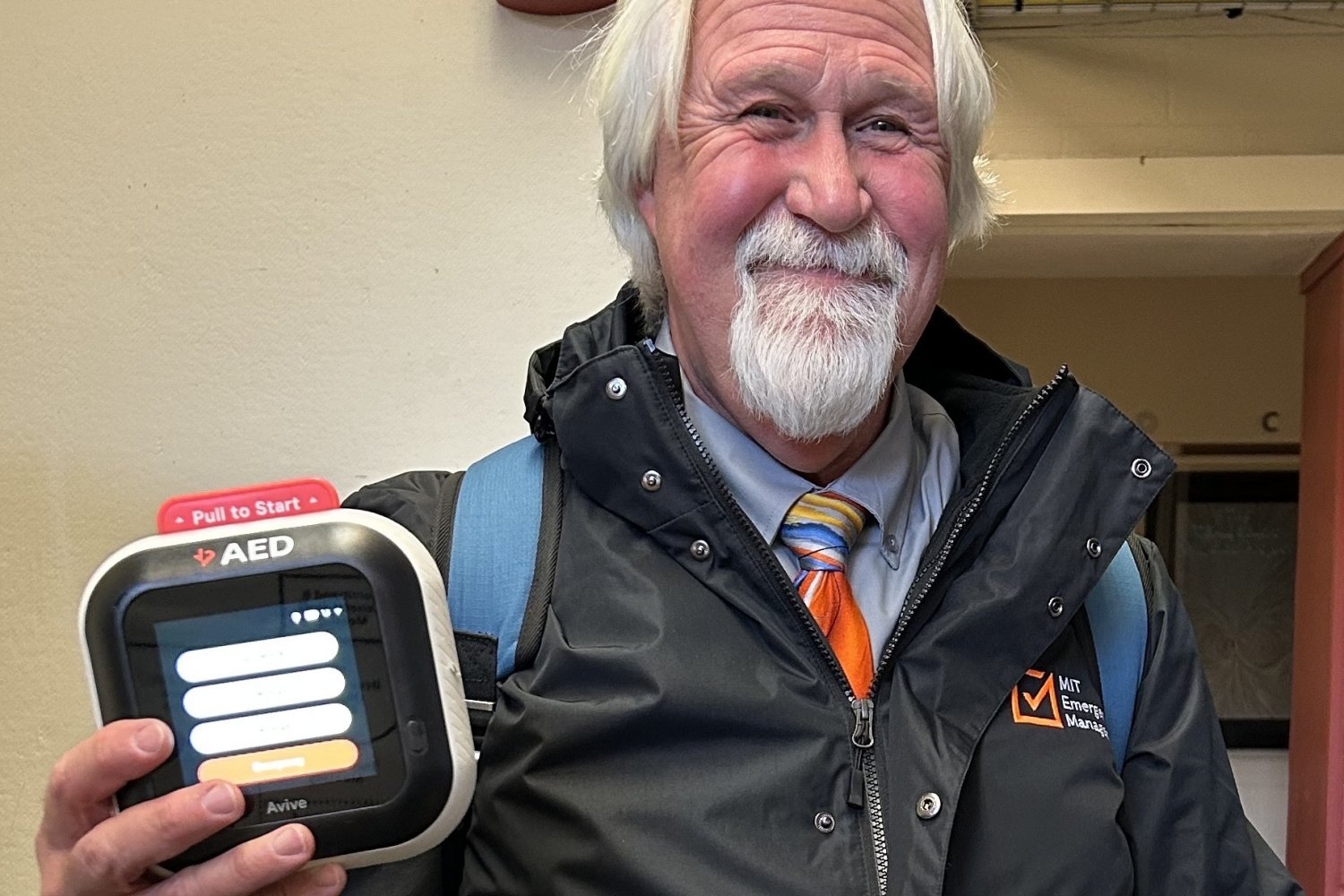
MIT has launched an initiative to install an automated external defibrillator (AED) in every building on MIT’s campus, including leased spaces and satellite locations. The effort will continue over the course of the upcoming year and is supported through funds from MIT’s central budget.
“Rapid access to an AED is a critical step in the survival of cardiac arrest victims,” says Suzanne Blake, director of MIT Emergency Management, which is spearheading the project. “We’re excited about the opportunity to implement this program at MIT and improve our lifesaving capabilities on campus.”
AEDs work by sending an electric charge to the heart of a person experiencing a cardiac emergency in order to restore their normal heart rhythm. But an AED is only effective if it is in close proximity to the cardiac emergency. While AEDs are not an uncommon sight around MIT — many buildings have them — their availability has been dependent on a department’s purchasing one through its own budget. With this new program, the funding is being provided centrally and the devices are being supplied to units free of charge.
“It was important for the Institute to make this investment to ensure that these devices are widely available to members of our community,” says Glen Shor, executive vice president and treasurer. “Suzanne and her team were critical to making this happen, and they will continue to oversee the program as a whole, including the procurement, administration, and maintenance of AEDs on our campus.”
Not only will the program install AEDs in buildings that weren’t previously equipped with them, it will also replace existing ones. For Senior Emergency Management Specialist David Barber, equipping every MIT building with an AED has long been a professional goal — and it’s one that derives from a personal experience.
“About 11 years ago. I became infinitely more interested in AEDs because I had a cardiac event on campus, and an AED saved my life,” Barber says. “I’m very lucky.” It’s a story he’s not shy about sharing with others. In fact, he often recounts his experience during CPR classes he teaches to underscore how use of the device, in combination with CPR, can be lifesaving.
Barber also enjoys describing how this particular type of AED made its way to MIT’s campus — or rather, made its return. “Being passionate about AEDs, I’m always on the lookout for the latest, greatest thing,” he says. Several years ago, MIT mechanical engineering students Rory Beyer ’17 and Moseley Andrews ’17 contacted Barber to find out if his office could provide them with used AEDs for a class 2.009 (Product Engineering Process) project. After graduating from MIT, the students continued to build upon the idea, and Barber heard from them again — this time to share information about their company, Avive, which they co-founded with a third partner, Sameer Jafri.
The energy-efficient Avive devices have built-in maintenance tracking. They also provide users with step-by-step instructions on a touch-screen display — a helpful feature for those without experience operating an AED and those who might find the prospect of doing so intimidating.
For Barber, the success of the new program has been incredibly rewarding. “It’s a triple win: One in every building, new technology, and departments don’t have to pay for them anymore. That the idea was born in an MIT classroom makes it even better.”
While training is not required to use an AED, MIT Emergency Management encourages all MIT community members to take first aid, CPR, and AED training to become more informed about how to respond to cardiac and other emergencies. MIT is a “HeartSafe Campus,” a certification granted by the National Collegiate Emergency Medical Services Foundation. Contact em-staff@mit.edu with any questions about the AED program.
